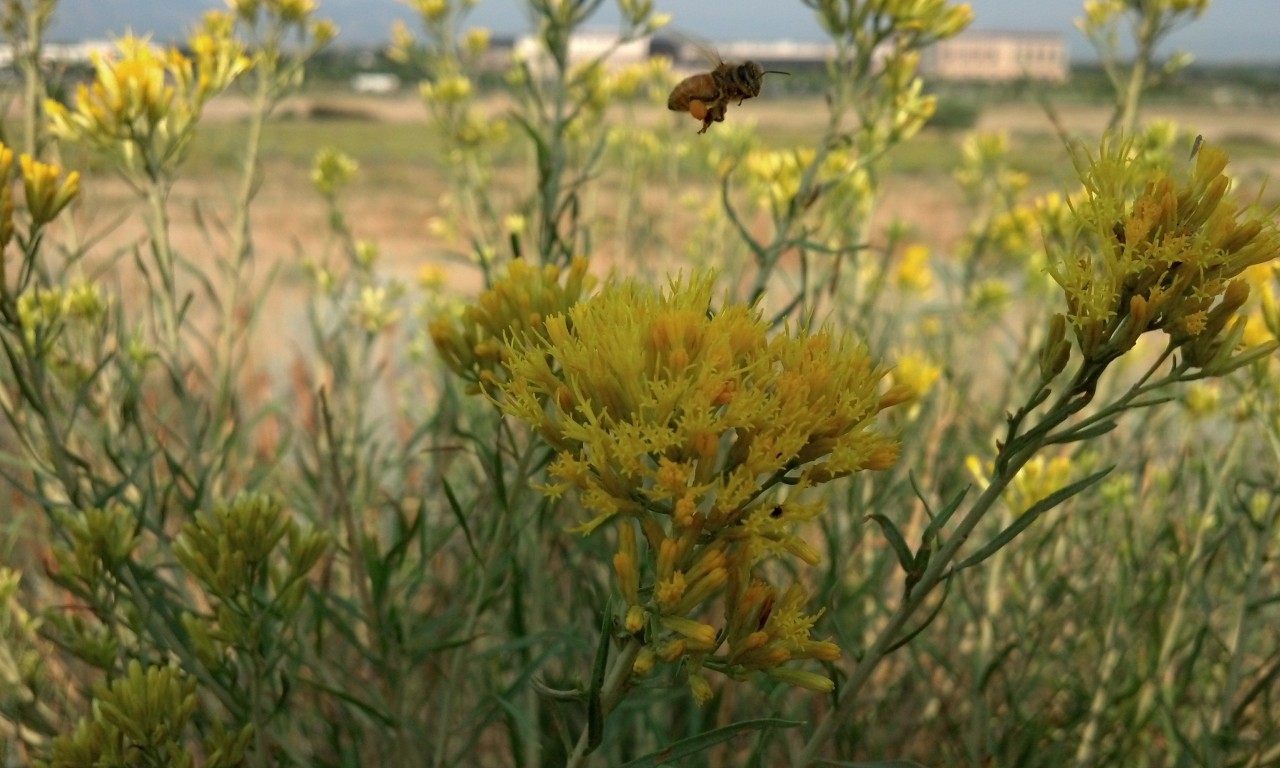Native pollinators are not only responsible for a significant amount of the food we eat, but also are key to the balance of natural ecosystems. Flowering plants require pollination to complete their life cycle and most rely on help from outside agents such as wind, water or animals to do so. Pollination is the transfer of pollen from one flower to another, or from one part of a single flower to another part. When people hear “pollinators,” they often just think of bees but there are so many more pollinators. The Natural Resources Conservation Service estimates there are more than 200,000 species of animals (mammals and insects) in the world that act as pollinators. Bees play an important role as pollinators, but so do butterflies, birds, beetles and mammals.
Boulder County Parks and Open Space realizes the importance of native pollinators and we are focusing efforts to find out what our native population of insect pollinators looks like and if there are things we can do to encourage thriving populations. One of the biggest issues our native pollinators currently face is loss of habitat. In 2014, we manufactured and installed pollinator houses with the help of volunteers and look forward to increasing our efforts and seeding pollinator-friendly plants to increase habitat.
Growing a Successful Monitoring Program
Last year was the inaugural year of our Pollinator Natural Resource Volunteer Monitoring program and we are excited to expand it this year. In 2014, three volunteers collected data for us, and this year we hope to recruit 16 volunteers. The purpose of our program is to determine the types of native pollinators present on Boulder County Parks and Open Space properties. The majority of our monitoring will be on restored grasslands and near agricultural areas on the plains.
Program Details
Volunteer monitors will be trained in pollinator identification, receive a monitoring location on open space and will be responsible for visiting the site monthly throughout the growing season to observe and record pollinator presence. This is a great opportunity to visit an area closed to public due to agricultural use, enjoy the peace and tranquility of open space, and contribute to the larger effort of learning more about native pollinators and how to help them thrive.


